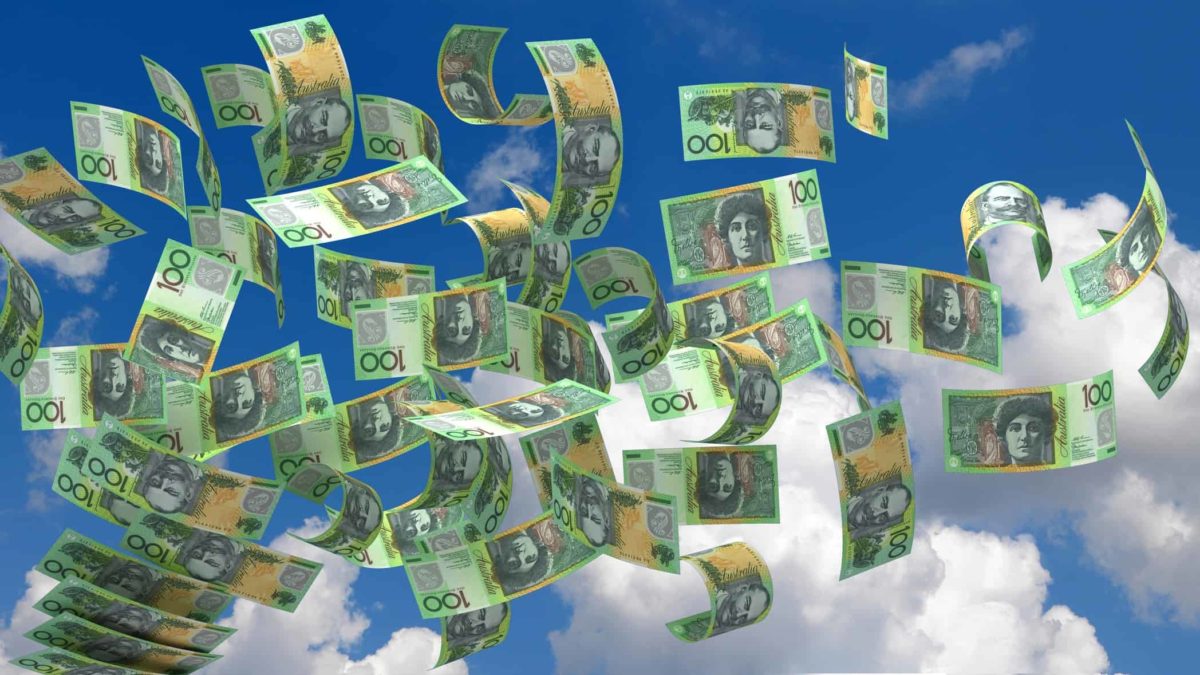Quantitative easing (QE) is the process by which a central bank (in Australia's case, the Reserve Bank or RBA) purchases longer-term securities — often government bonds — using its cash reserves.
This pumps money directly into the financial system, improving liquidity and encouraging lending and investment. A type of monetary policy, quantitative easing is utilised to avoid negative interest rates.
Understanding quantitative easing
Put simply, quantitative easing is when a central bank creates and spends large sums of cash. It is the opposite of quantitative tightening, which removes money from financial markets.
Now, let's look at that in more depth.
The purpose of quantitative easing is to increase the money supply to spur economic activity. A QE program bolsters bank reserves. This increases banks' liquidity and ability to lend, expanding the money supply in financial markets.
During an economic downturn, the money supply tends to contract as commercial banks become fearful of lending to corporations and individuals. As less money flows into the market for available goods and services, prices generally drop, and the economy faces deflationary pressure.
Nominally, deflation appears to be a good thing in the short run, as the cost of buying things goes down for consumers. But it also prompts them to delay major purchasing decisions in anticipation of even lower prices in the future. As a result, businesses cut production as demand goes down.
For example, imagine that you want to buy a house. Would you buy it now if you expect the price to fall by an additional 20% within the next year? Probably not. When home builders anticipate less demand, they also stop building new houses.
This phenomenon happens in almost all sectors of the economy when overall price levels start to fall. As you can see, falling prices intensify the slowdown in economic activity, triggering a vicious cycle of lower demand, resulting in lesser economic activity, which leads to increasing unemployment. As a result, central banks usually target slow but steady economic growth.
Historical use of quantitative easing
When a central bank witnesses or anticipates a slowdown in the economy, it usually responds by trying to increase spending.
The first order of business for policymakers is to cut target interest rates (in other words, the official cash rate)1 to as low a level as possible.
The United States Federal Reserve and most other major central banks maintain target interest rates by buying and selling government bonds and treasury securities in the open market.
However, the law of supply and demand breaks down once the short-term interest rate is zero or close to it. At that point, the central banks resort to unconventional methods and tools, and quantitative easing is one of them.
Historically, central banks have used quantitative easing when the short-term interest rate reaches near-zero, and traditional monetary policy tools have become ineffective.
Special considerations with quantitative easing
The main risk of quantitative easing is increased inflation without the desired increase in economic activity. Economists call such a situation a 'liquidity trap'.
A liquidity trap occurs when investors stop investing in businesses and instead keep cash at hand despite low interest rates. As a result, the QE program contributes to 'stagflation', where inflation increases and the unemployment rate remains high.
Stagflation in the economy is one of the most dreaded situations any central bank must deal with because it makes monetary policy ineffective — even QE.
With high unemployment, central banks can't increase interest rates because this would intensify the prospect of a recession. Hence, investors and speculators stop anticipating an increase in interest rates despite a high inflation rate. Consequently, the economy's currency loses value against other major foreign currencies, further fueling inflation.
While the US dollar enjoys 'exorbitant privilege' as the world's reserve currency2 — and is often treated as a safe haven for foreign capital — rampant QE-induced inflation could ultimately contribute to the devaluation of the dollar in the long run.
An example of QE
Central banks worldwide have experimented with QE, but the Bank of Japan (BOJ) was the first to utilise this policy tool.
In the early 2000s, the Japanese economy faced massive deflationary pressure despite the BOJ leaving the interest rate close to zero since 1999.
In March 2001, the BOJ started buying more government bonds to keep the interest rate close to zero, thereby flooding the current account balance of commercial banks.
This eventually flowed through to the economy, with the gross domestic product (GDP) growing between 2002 and 2007. Like many countries worldwide, however, Japan saw negative growth in the wake of the global financial crisis (GFC).
In 2007, the US Federal Reserve and the Bank of England (BOE) resorted to similar policy responses. Again, QE helped restore positive economic growth.
Following negative GDP growth in 2008 and 2009, the US returned to positive GDP growth from 2010 until 2019. The coronavirus crisis, however, saw GDP in the US fall by 3.5% in 2020.
In response, the Federal Reserve lowered interest rates to close to zero and started buying long-term bonds. It inflated its balance sheet to mitigate the impact of COVID-19 on the unemployment rate. The unemployment rate reached a high of nearly 15% in 2020 but dropped to below 5% by the end of 2021.
In Australia, the RBA implemented QE for the first time in 2020, also in response to the coronavirus crisis.
GDP fell by 0.3% in 2020, but as the economy recovered, more jobs were created, and the unemployment rate fell throughout most of 2021. From a high of more than 7% in 2020, Australia's unemployment rate recovered to a low of 3.4% by July 2022.

